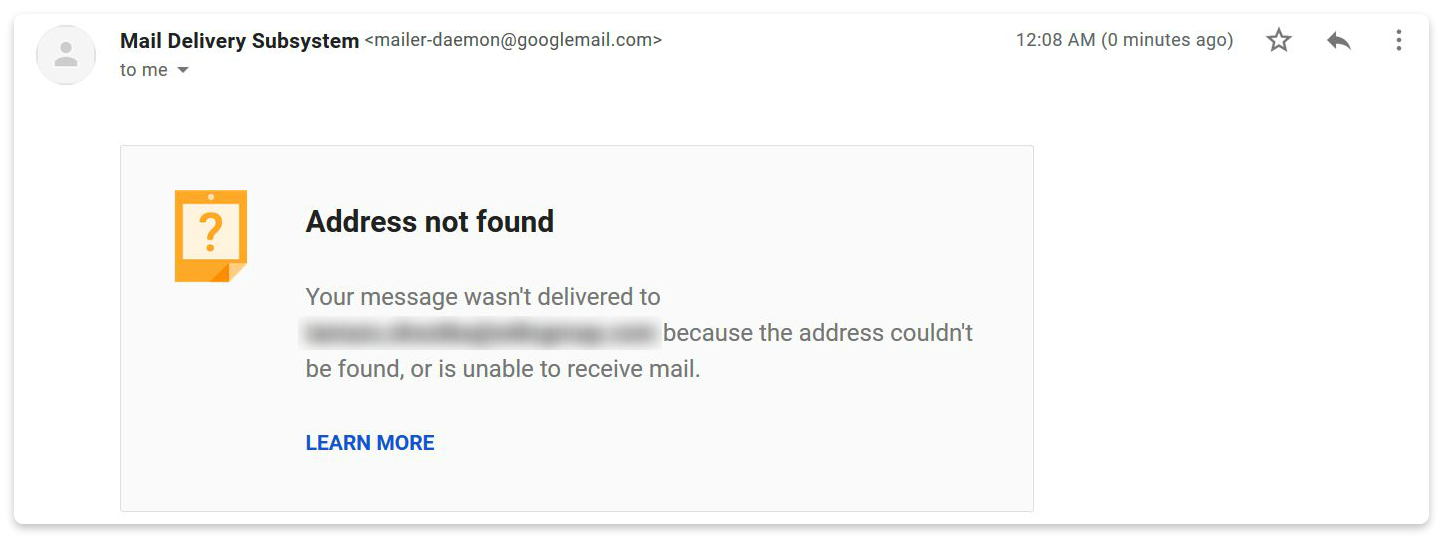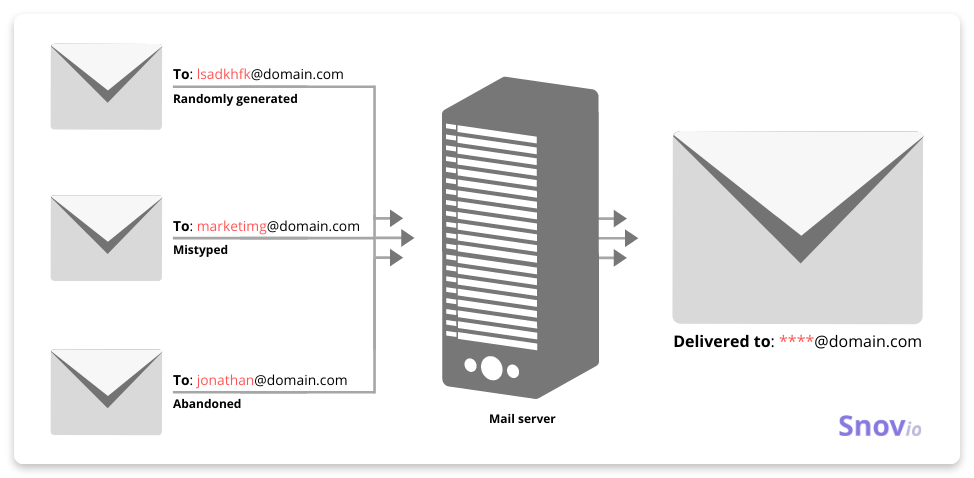So, you’ve finally grown your email list big enough. Now, it’s time to learn how to verify email addresses to keep that list clean, improve deliverability, and decrease your bounce rate.
Email verification is one of the most important steps in email marketing, right after building your list of leads. This is why we have devoted this whole article to email verification and why you shouldn’t neglect it.
Outline:
What is email verification (and how is it different from email validation)
If only you knew how much time and effort it took me to find out the exact difference between these two.
Online, in every blog and on every website, people use verification and validation interchangeably; however, the correct definition is slightly more precise.
Email verification is the process of checking an email address for being existent and active, aka valid. A valid email is the one that can receive messages from other senders. Every email verifier, either bulk or single, performs (or is at least supposed to) multiple steps of the verification process. The most common are the syntax, domain, catch-all, and MX record checks, as well as email address ping (you will read about them in detail further on in the article).
Email validation is the final result of the email verification process that’s provided to the user. Depending on the result, an email gets one of the email verification statuses, usually “valid,” “invalid,” and “unverifiable” (often marked by green, yellow, and red colors) Sometimes, validation also implies checking any additional information that comes with the lead’s email or checking the source of that lead.

How to verify an email address with 4 easy methods
There are many ways you can check if an email is valid, though some are not as effective as the others, and some may be convenient if you have a few emails to check only.
Method 1: Send a test email to the address
This tactic is the most straightforward one, but we suggest you not use it if you have many emails to check. When you send an email to a fake or invalid email address, it will bounce back, and you’ll receive a message that your letter wasn’t delivered or the address wasn’t found.

But remember that using this method frequently might increase your bounce rate, damage your sender reputation, get you added to spam lists, and mess up your metrics. The solution to it is to use a dummy account and send a test email from it.
Method 2: Search the address in Google
Of course, this method won’t show you if an email address is fake, but it might tell you if it’s valid. These days, people mention their email addresses everywhere on the internet – be that their website or social media networks. If you have only a few email addresses to check – this method may work for you, as it won’t damage your domain reputation.

Method 3: Ping the server
You can ping the mail server and ask whether the address is valid with the help of such tools as PuTTY or Telnet. But beware, even though this method is quite accurate, it’s cumbersome and risky for your infrastructure.
Method 4: Use email verifier
The best way to check if an email address is valid is by using email verification software that can help you validate email addresses with a couple of clicks. While all email checkers are slightly different depending on the features and the number of email addresses you can validate per month, they are all very easy to use.
Register at Snovio to secure your freemium and unlock more sales tools.
Why you shouldn’t skip email verification
If you doubt why you need to check email validity, let me show you why email verification matters and why ignoring it when doing email marketing can lead to catastrophic campaign issues that will take weeks to resolve.
Reason 1: It helps keep your email lists fresh
Yearly, 22.5% of email addresses become invalid. That’s not your fault; this happens naturally due to various external reasons. Most often, it’s because people change companies, and their corporate email addresses you have on your list get deactivated. If you don’t verify email lists regularly, in a year, the 22.5% bounce rate will exceed the acceptable bounce rate tenfold, and your sender reputation will take a real hit. Pro tip: verify your email list once every two months.
Reason 2: It reduces hard bounces
A hard bounce is an email that returns to the sender because the recipient doesn’t exist, i.e., the email address is invalid. High bounce rates are usually indicative of spammers, which is why ESPs don’t treat users with high bounce rates kindly. When your bounce rate grows, your sender reputation falls. Once it crosses a critical threshold, your account gets blacklisted.

Reason 3: It improves email deliverability
When you use an email verifier to filter out invalid email addresses, you can be sure that those that remain are capable of receiving emails, meaning your messages reach the inbox. Subsequently, your email deliverability stays high. This helps save on email sending and, once again, preserves your email sender reputation. Speaking of…
Reason 4: It maintains high sender reputation
Your sender reputation depends on a number of things. We’ve already mentioned bounce rate and deliverability, but there’s also spam report rate and your sender habits (never forget to warm up new email accounts!). Consistently using email verification services in your marketing will help you maintain a high sender reputation and avoid blacklists. Don’t know how to check your sender reputation? Find out here.

9 Best Email List Cleaning and Validation Services In 2024: Tested
22 December 2023

Best Email Verification Services of 2024: Prices And Features
22 December 2023
How an email verifier works
There are lots of technical nuances to how email verifier tools work. The general idea is that every email tester performs verification according to the developers’ algorithms. For example, our email verifier goes through 7 steps of email verification for maximum accuracy:
- syntax check
- gibberish check
- domain existence check
- MX record check
- catch-all domain check
- SMTP authentication (email address ping)
- freemail check
Here are the 5 most common email verification steps explained:
1. Syntax check
When you write a professional email, you most likely use an app like Grammarly to check your copy to be sure every word is spelled correctly, and your punctuation is perfect.
An email verification service does the same.
Syntax check algorithms look for the following:
- Email standard correspondence: the local-part, the at-symbol ( @ ), and a domain name with a dot-symbol ( . ) are present
- Number of symbols: no more than 64 characters are allowed in the local-part
- Appropriate placement of dots ( . ) and the ( @ ) symbol
- Special characters: ? “ # $ % & ` * + – _ . / | \ ^ {} ~ can be used in the local part of an email address, just not at the beginning or at the end of the local part (find out more about special characters in email addresses here)
2. Domain check
A domain name goes right after the @ symbol and shows which domain the email address is tied to. For example, in pauline@bombom.com, bombom.com is the domain name. Email verification services check if the domain name is correctly spelled, as well as whether the website and the domain are real and active.
This check is important for one simple reason – websites expire, and so do email addresses tied to them. Some companies leave the market while some migrate to a new domain and create new emails tied to the new domain.
3. Catch-all check
An email verifier also checks if the email belongs to a catch-all domain. A catch-all domain (also known as unverifiable or accept-all) is the type of a domain that is set to always accept mail even if you write some gibberish in the local part of the email belonging to it.

For example, the domain name natwest.com is a catch-all. You can keyboard smash and get an email address like jhfajegdfkldaj@natwest.com that will still accept emails despite being non-existent and random. All email addresses associated with this domain name will accept mail, yet may result in hard bounces as catch-all emails are often set up to avoid unsolicited mail.
A reliable bulk email verifier (and even an individual email verifier) checks the domain name for being catch-all and notifies you to help prevent bounces. If you see that a verified email is labeled as a catch-all/unverifiable, you can act at your own risk and decide whether you want to send messages to it or delete it from the list once and for all to only send to valid email addresses.
4. MX record check
In simple terms, an MX record specifies the mail server that is responsible for accepting emails on behalf of a specific domain. It’s a more complex solution for identifying garbage emails. This feature checks whether the mail exchange entry listed in the email address is an actual, registered and hosted domain name, which can be accessed online.
MX record check is an inevitable step in an email verification process. There are some more technical details regarding this process, but the gist is that to provide correct results, an email verifier has to use an MX record check.
5. Email address ping
During this check an email verifier sends a ping to an email address to see if it is capable of receiving messages and reacting to them. If the request reaches the recipients’ email address and receives a response, an email is considered active and you can safely send real emails to it. This is also known as SMTP authentication.
What’s next? Lead enrichment
As you can see, email verification is only hard in theory. That’s why you should trust the email verification services that already have it all figured out!
By investing in an email verifier you will always be sure that the emails in your list are real, valid, and able to accept any email you send to them. This will maintain your bounce rate low, your email sender reputation high, and your deliverability as high as 98%.
What’s next? Why not enrich your leads to improve your personalization and grow sales.
Good luck!
Have any questions about email verification we haven’t covered in this article? Let us know in the comments below and we will add any info we’ve missed with credit to you!






Hey, Thank you for sharing such great information about the email verifier. I am using Quickemailverification’s email checker tool which is free to use and also provides API. I am gonna try your tool too. It seems efficient.
I liked the post. Can you recommend any tools that could help to check bounce rate?
Hi Romeo!
When you send drip campaigns with Snov.io, you can check the campaign bounce rate in the statistics.
Thanks for the post. I’ve been doing email address testing with your verifier for several months already. No complaints.
Informative post. Now I understand how to verify email address without any pain. You do all work by yourself. Just superb!
I use Snov.io’s verfier to check if my email list contains any fake email addresses. I am satisfied with your service.
This is a very interesting article. Please, share more like this!
I quite like reading through a post that can make people think.Also, thanks for allowing me to comment!
Wow, great blog.